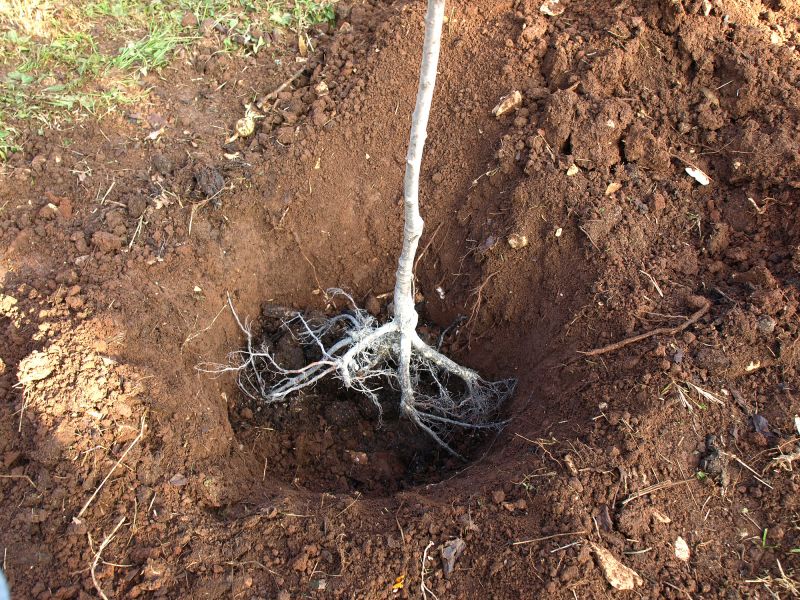Favorite Products For Clearing Sewer Line Roots And Preventing Blockages
Identify the most popular tools to help you remove roots efficiently and keep your sewer system flowing smoothly.
 Sewer line root removal products are essential tools for maintaining the integrity and functionality of underground plumbing systems. Roots from trees and shrubs can infiltrate sewer lines through small cracks or joints, leading to blockages and potential damage over time. Addressing these issues promptly with the right products can help prevent costly repairs and service disruptions. The market offers a variety of solutions, including chemical treatments, mechanical augers, and specialized tools designed to target and clear root intrusions efficiently.
Sewer line root removal products are essential tools for maintaining the integrity and functionality of underground plumbing systems. Roots from trees and shrubs can infiltrate sewer lines through small cracks or joints, leading to blockages and potential damage over time. Addressing these issues promptly with the right products can help prevent costly repairs and service disruptions. The market offers a variety of solutions, including chemical treatments, mechanical augers, and specialized tools designed to target and clear root intrusions efficiently.
Top Overall Option
Chemical Root Killer with Root-Targeted Formula
This chemical root killer is formulated to effectively inhibit root growth and dissolve organic material within sewer lines. Its easy-to-apply liquid form allows for quick treatment, making it suitable for routine maintenance or addressing active root intrusions. When used as directed, it can help maintain clear pipes and reduce the likelihood of severe blockages. Always follow safety guidelines and manufacturer instructions for optimal results.
Types of Products For Sewer Line Root Removals
Chemical Root Killers
Liquid or granular formulas designed to inhibit root growth and dissolve roots within pipes.
Mechanical Augers
Motorized or manual tools used to physically cut or break apart roots obstructing the sewer line.
Root Cutting Blades
Specialized blades attach to augers or snakes to target and cut through stubborn roots.
Biological Root Control
Enzymatic or bacterial treatments that gradually break down roots without chemicals.
High-Pressure Water Jetters
Powerful water jets that clear roots and debris from pipes using high-pressure streams.
Pipe Inspection Cameras
Camera systems used to locate roots and assess the severity of intrusion inside the sewer line.
Root Inhibitor Coatings
Protective coatings applied to pipe interiors to prevent root penetration over time.
Combination Kits
Sets that include chemicals, augers, and other tools for comprehensive root removal and prevention.
Manual Drain Snakes
Hand-operated tools for small-scale root removal and pipe cleaning.
Enzymatic Cleaners
Biological solutions that digest organic material in pipes, reducing root growth.
Hydro-Jetting Systems
Advanced equipment that uses high-pressure water to clear roots and debris from sewer lines.
Root Barriers
Physical barriers installed to prevent root intrusion into sewer lines.
Popular Choices
Widely used for their ease of application and ability to target roots chemically.
Commonly employed for their efficiency in physically breaking apart roots in pipes.
Popular for their powerful cleaning capabilities and ability to remove stubborn roots.
Favored for their gradual, chemical-free approach to managing root growth.
Essential for locating root intrusions and assessing pipe condition before treatment.
Accessible and versatile tools for small-scale or DIY root removal tasks.
Effective attachments for augers to tackle tough root blockages.
Popular biological options for ongoing pipe maintenance.
Preventive solutions that help reduce future root intrusions.
Convenient sets that provide multiple tools and solutions for comprehensive treatment.
Chemical root removers are commonly used for their ease of application and ability to dissolve roots within the pipes. These products typically contain active ingredients that inhibit root growth and break down organic material. Mechanical options, such as root-cutting augers and manual snakes, allow for physical removal of roots, providing a more immediate solution especially in severe blockages. For persistent or heavily infested lines, combining chemical treatments with mechanical cleaning can enhance results.
When selecting a product for sewer line root removal, it is important to consider the specific needs of your plumbing system. Factors such as pipe diameter, the severity of root intrusion, and the frequency of maintenance should influence your choice. Proper application and safety precautions are essential to avoid damage to pipes or harm to users. Regular inspections and maintenance can help identify root intrusions early, making treatment more manageable and less invasive.
Key Buying Considerations
- Pipe diameter and material compatibility to ensure the product is suitable for your sewer system.
- Severity of root intrusion to determine whether chemical, mechanical, or combined approaches are needed.
- Ease of application and user safety instructions for effective and safe use.
- Frequency of treatment required based on the extent of root growth and pipe condition.
- Potential impact on pipe integrity, especially when using mechanical tools or chemicals.
- Availability of professional support or guidance for complex or severe blockages.
- Compatibility with existing plumbing and any local regulations or codes.
- Environmental considerations, even though not eco-focused, to avoid damage to surrounding structures.
- Cost-effectiveness over time considering the frequency of treatments and potential repairs.
- Additional features such as camera inspection compatibility or preventive coatings.
- Product reviews and user feedback to gauge real-world performance.
- Manufacturer instructions for application, safety, and disposal of products.
- Storage requirements and shelf life of chemical or biological treatments.
- Availability of replacement parts or accessories for mechanical tools.
This content may contain affiliate links. We earn commissions for purchases made through these links, which helps support our work and provides valuable information to readers.
